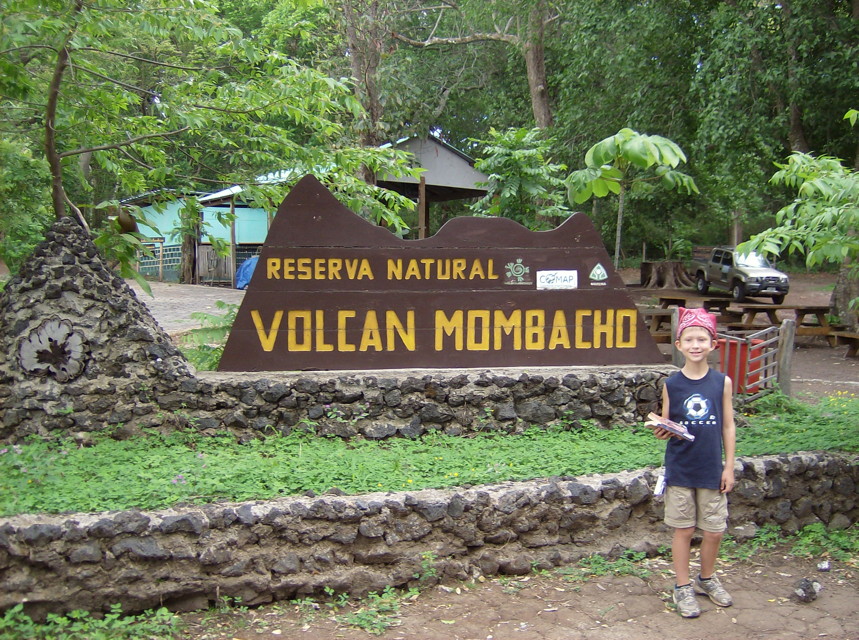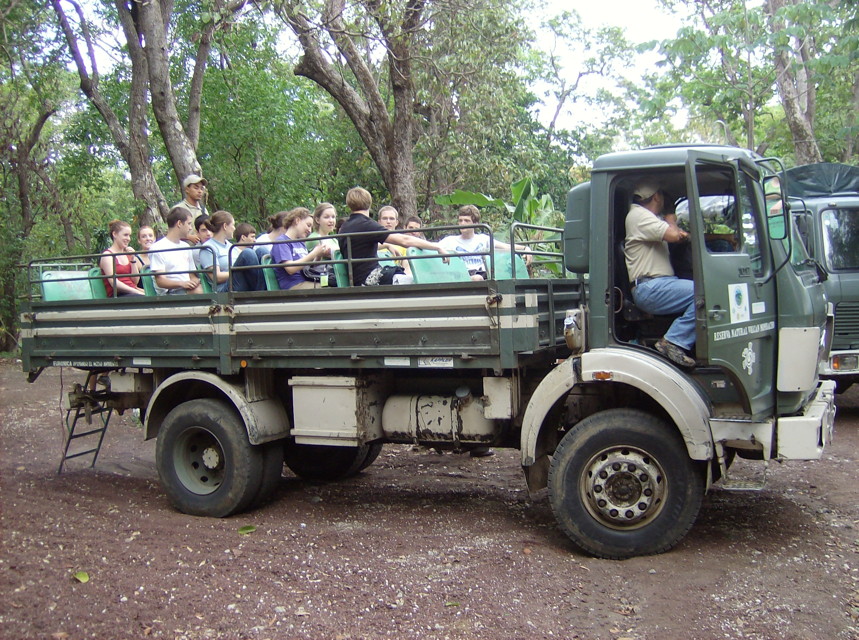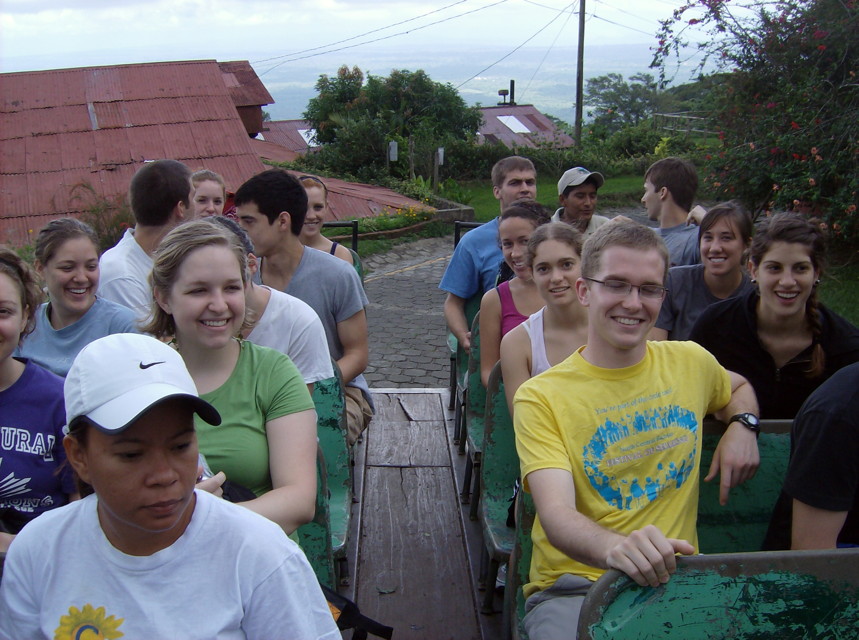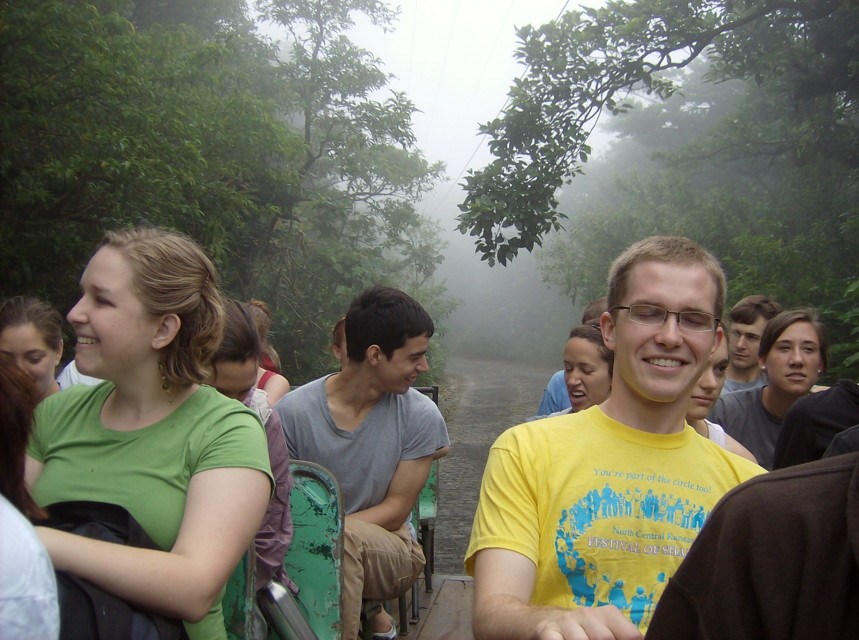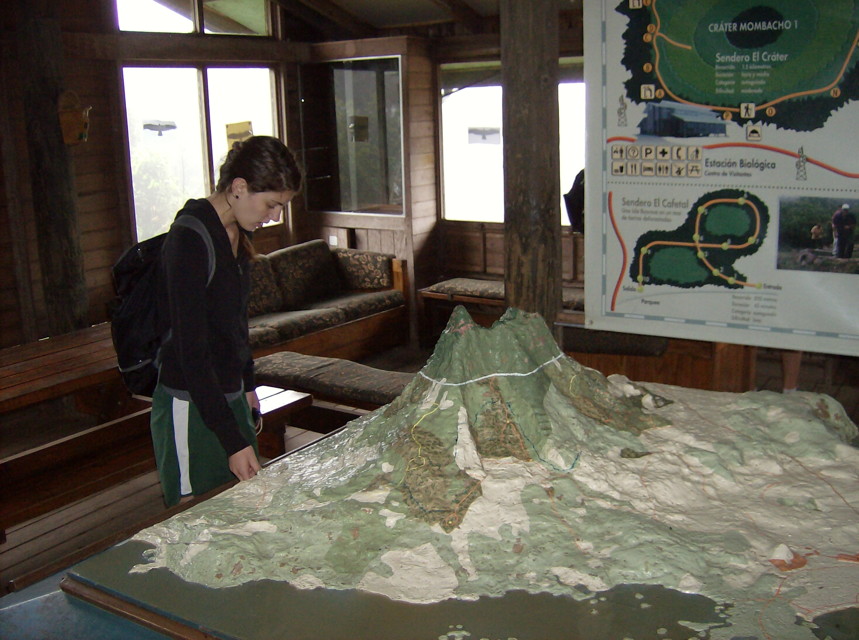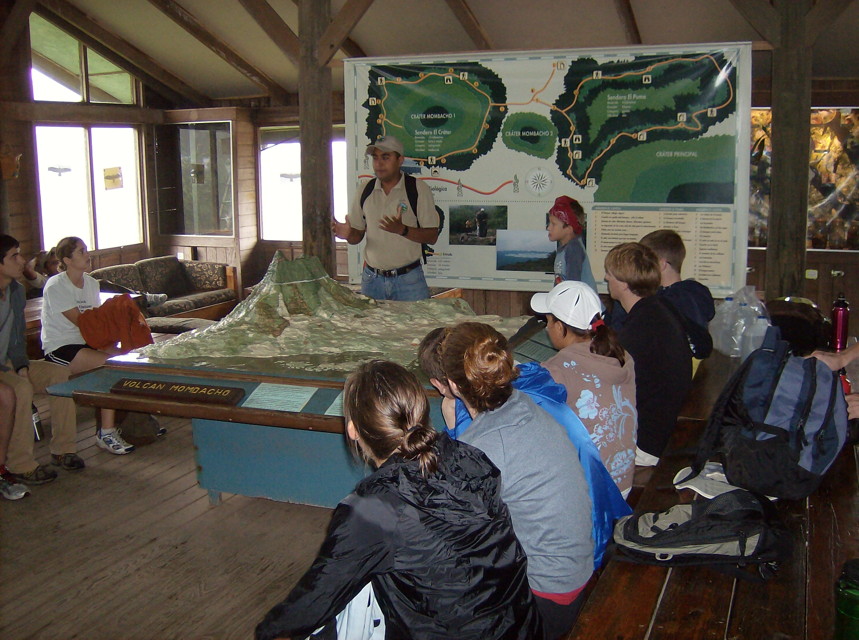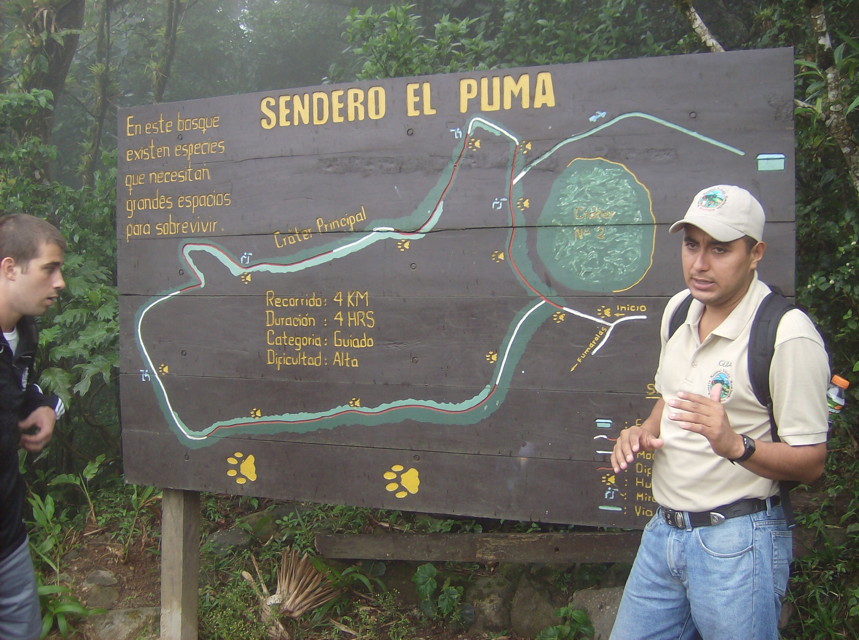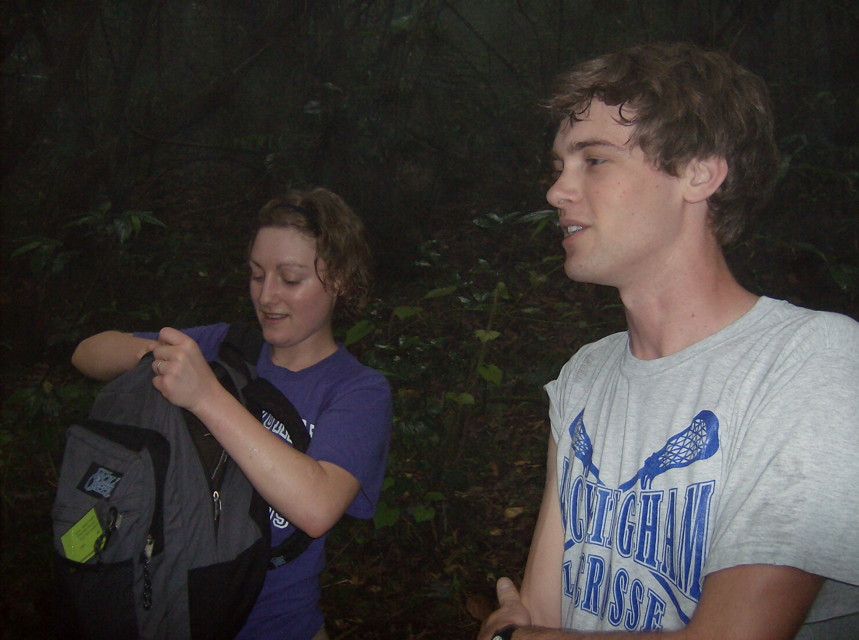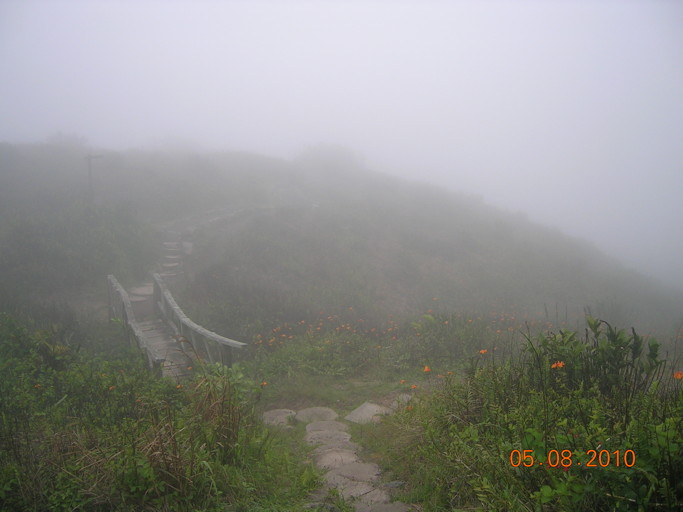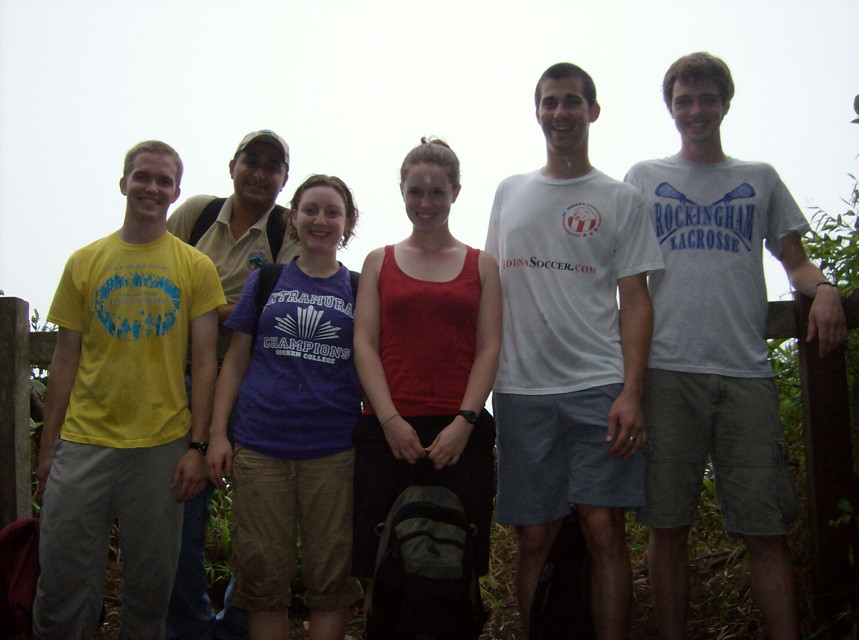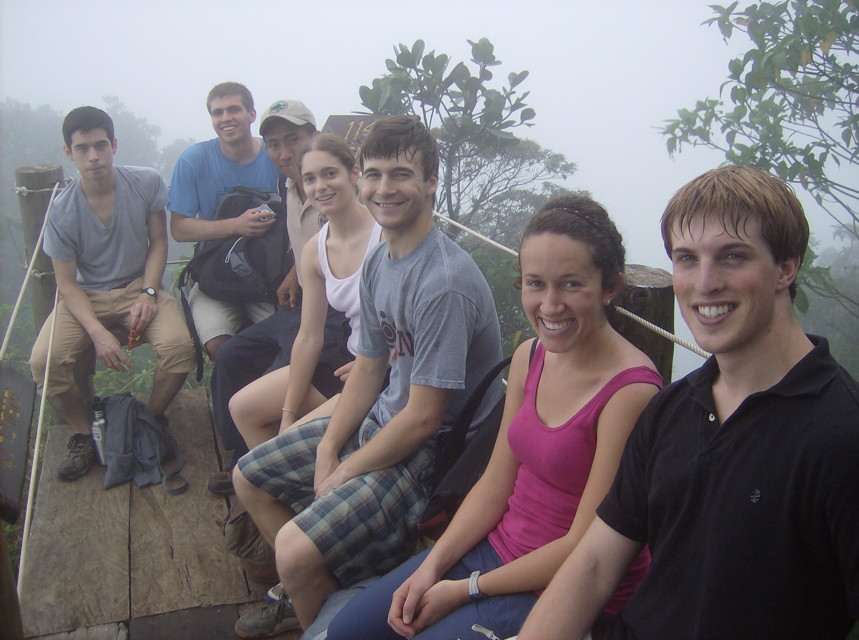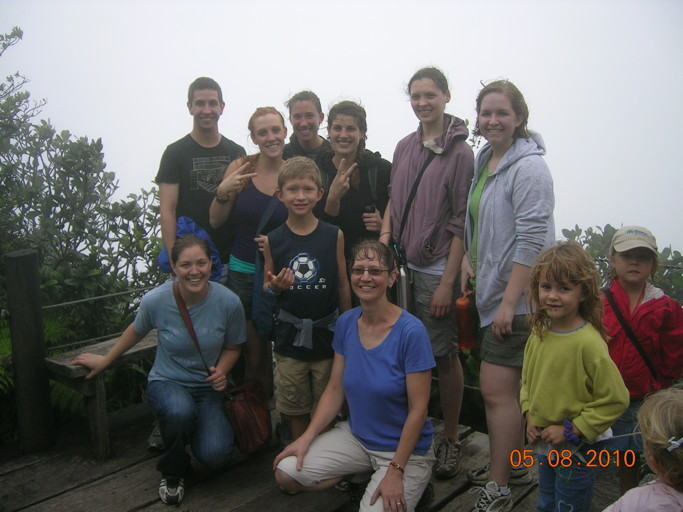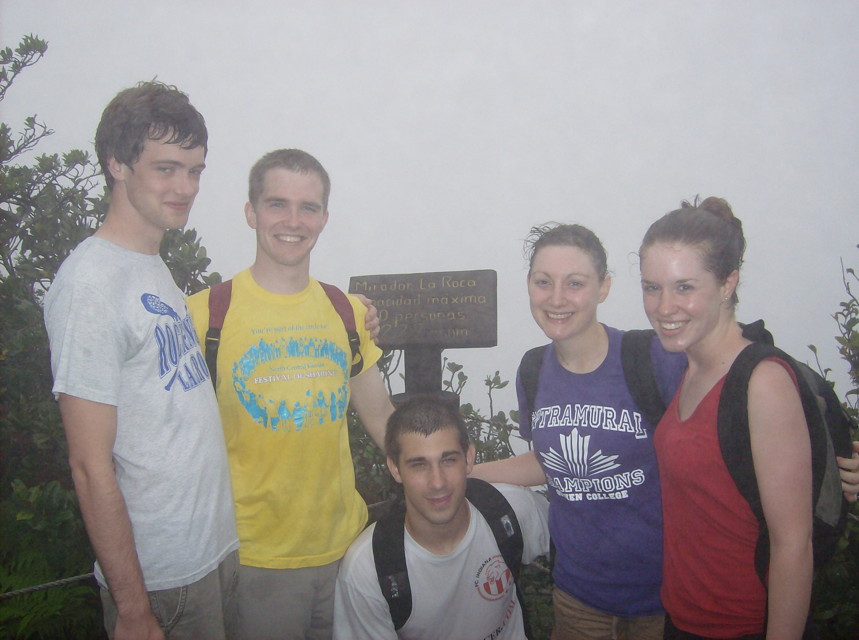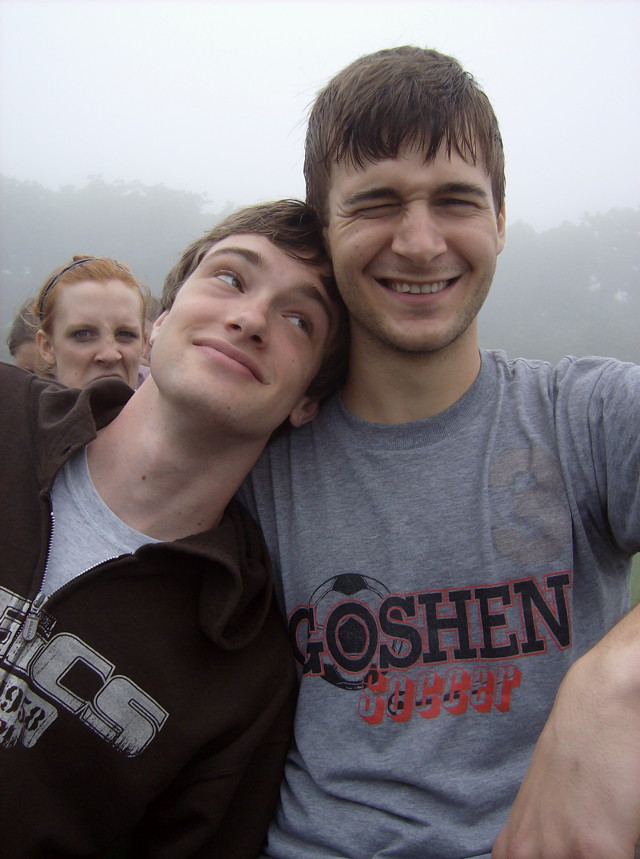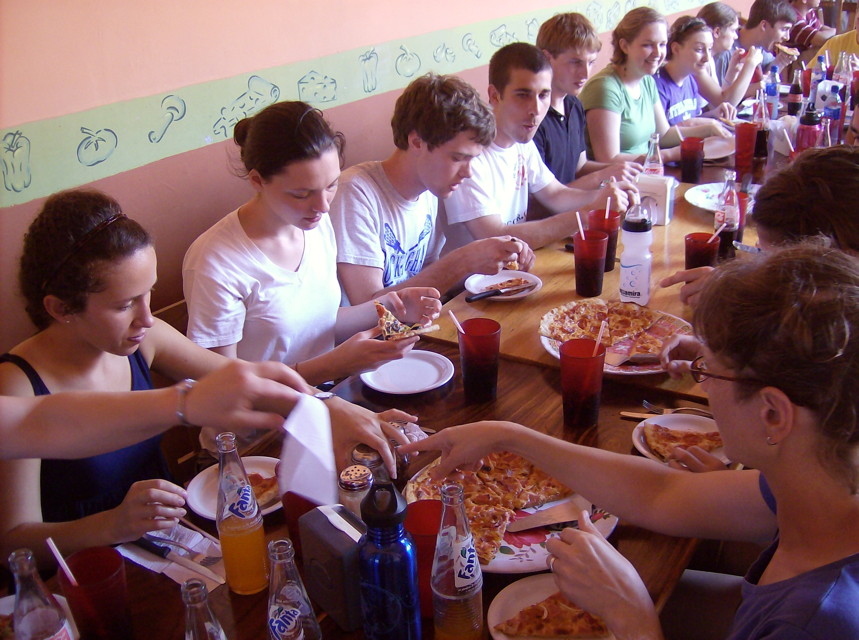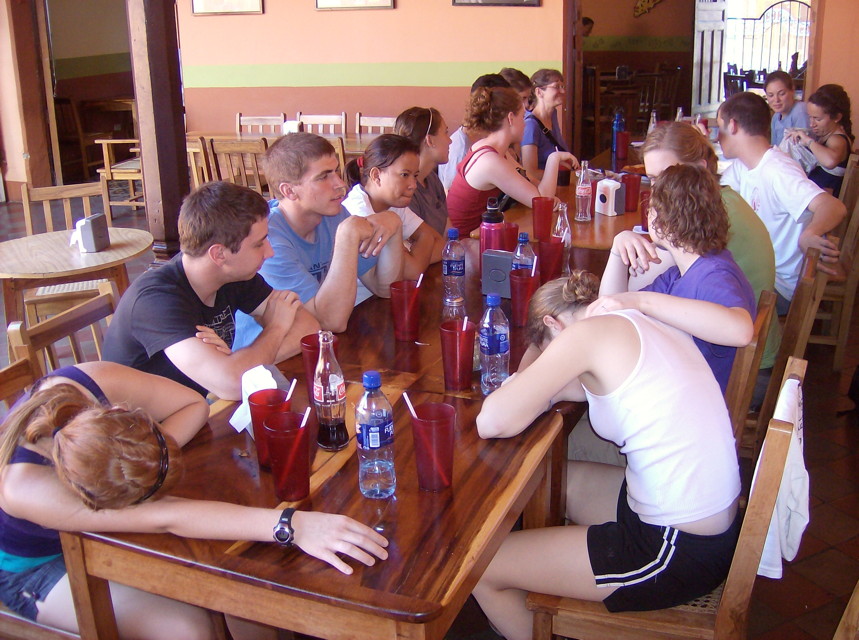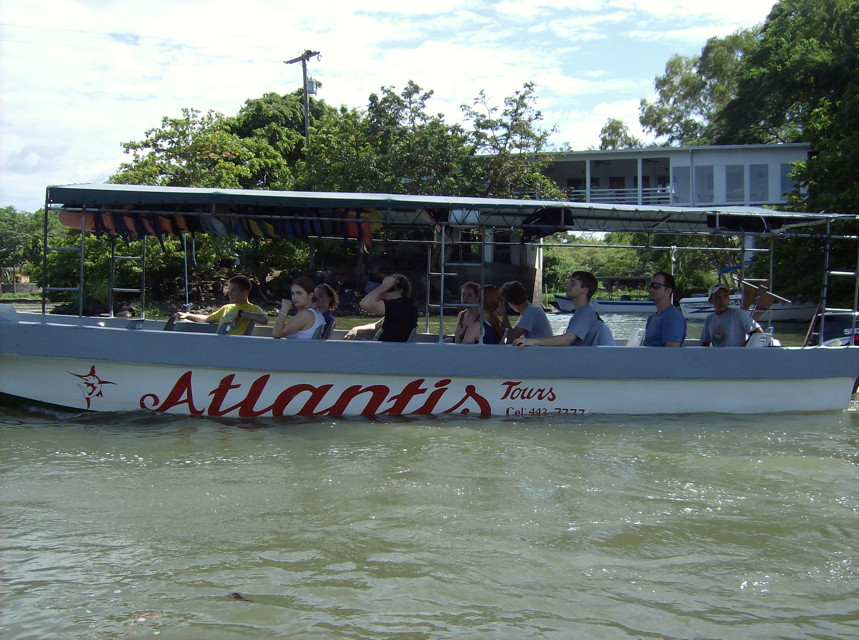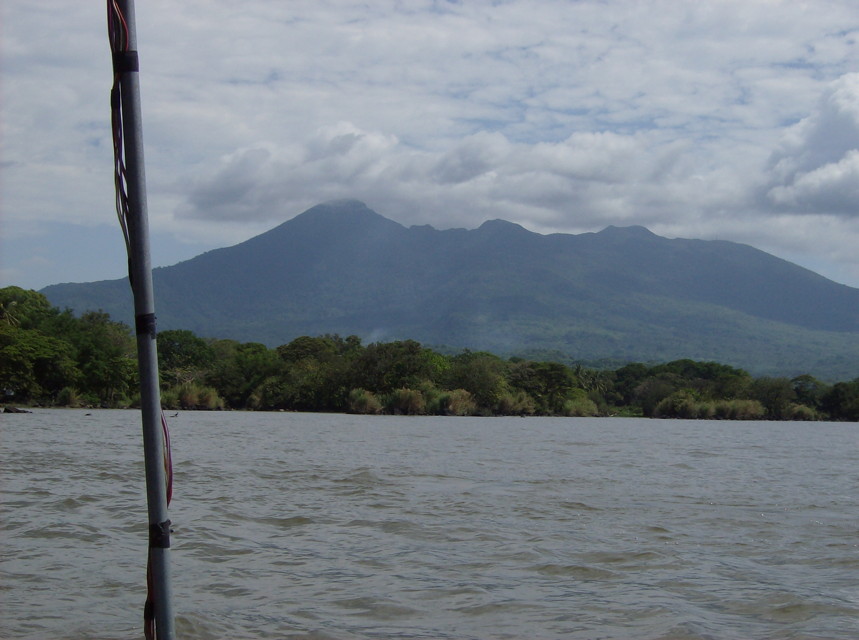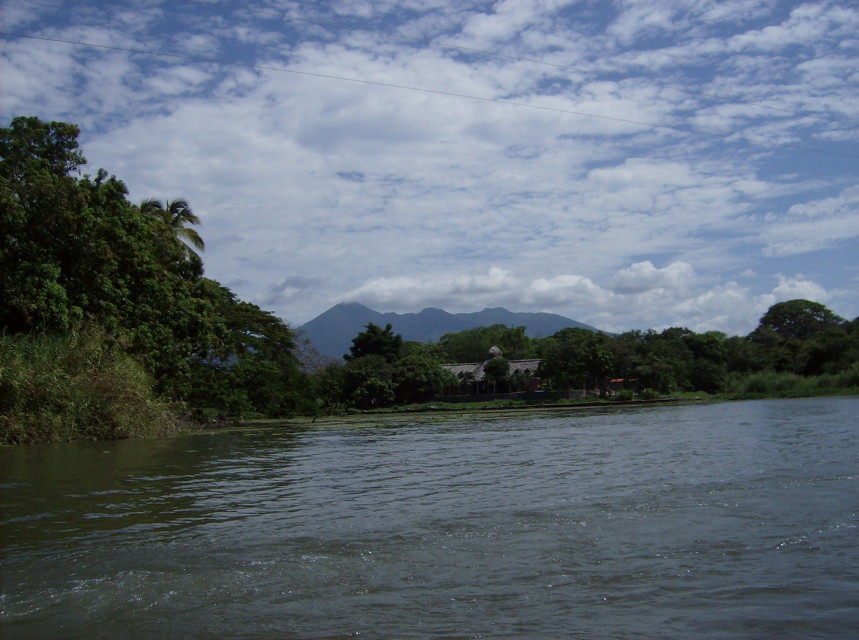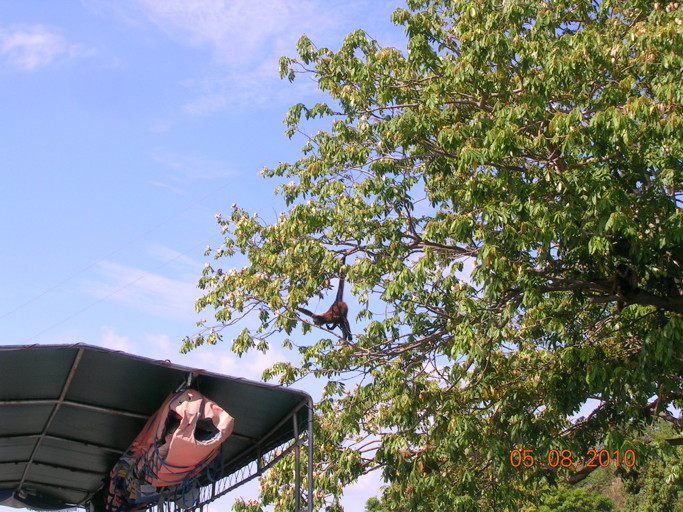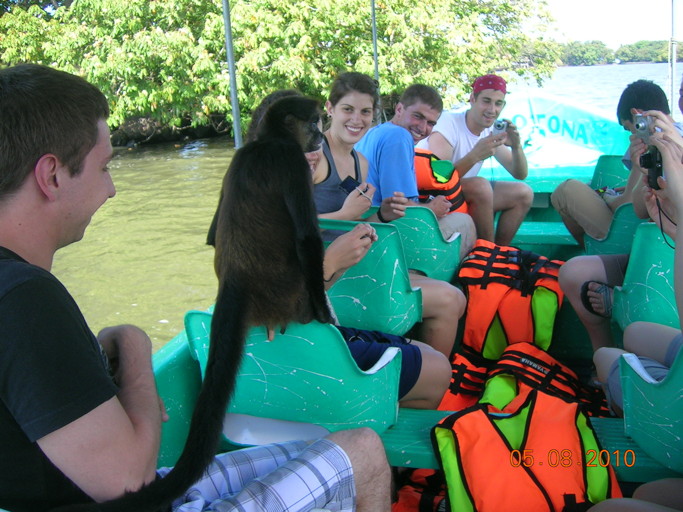Volcán Mombacho and more
Saturday, May 8, started bright and early with SSTers showing up at Casa de Goshen at 7 AM for our first field trip. Their promptness was impressive. (Was it in part the promise of fresh coffee from the Matagalpa region which our guest lecturer, Vincente Padilla, a coffee grower and human rights activist, had brought to town the day before?)We spent our morning exploring and experiencing one of Nicaragua’s two cloud forests — this one on top of Volcán Mombacho — and our afternoon exploring Las Isletas in Lake Cocibolca / Nicaragua and the nearby city of Granada — all an easy 40-minute bus ride from Jinotepe. It was a day of contrasts and varied activities, and a welcome change of pace from Spanish classes and guest speakers 🙂
The top of Volcán Mombacho is a protected nature reserve, and is home to a range of orchids and bromeliads, tree ferns, and old-growth and dwarf forests. Getting to the reserve was almost as much fun as hiking around in the reserve itself! We loaded into a heavy-duty transport truck for the 30-minute ride up the mountain; the views from the truck were spectacular, and the incline sobering — reaching (according to guides) 40 degrees more than once.
In Goshen, we are well-acquainted with “lake effect” weather. It turns out the the Mombacho cloud forest is caused by lake effect as well! Warm air from the Pacific Ocean blows inland across Lake Cocibolca / Nicaragua and up the face of Mombacho. By the time the warm air and moisture rise to 1100 meters, conditions are right for a cloud forest. About 2/3 of the group chose a longer, more strenuous hike around the lip of the crater (Sendero el Puma), and 1/3 of us a more moderate loop (Sendero el Cráter). We were literally in the clouds for the hikes. While this meant we did not get to see amazing panoramic views — or, really, any views at all — it did mean that we felt transported to a very different part of Nicaragua with cool temperature, high humidity, and different vegetation. (Of course, when we looked up at Mombacho from Lake Cocibolca later that day and saw the peak was clear, we did wish that we could have experienced both versions.) Since Mombacho is an active volcano (although it has not erupted anytime recently), some of us got to encounter fumaroles (holes in the ground that vent not, sulfurous air), and all of us got to smell sulfur fumes at some point.
After a mountain-top morning, we headed for the lowlands for lunch and afternoon. Las Isletas, a 365-island archipelago, were formed some 20,000 years ago by an eruption of Volcán Mombacho. Most now hold island homes for Nicaragua’s wealthy, as well as foreigners (our lanchero pointed out various islands owned by the Pellas family, the Chamorra family, and the owners of Lexus among others); others continue to be inhabited by generational islanders. A stop at “Monkey Island” allowed some very personal interactions with several spider monkeys, one of which was quite willing to board the boats and explore backpacks and passengers in a friendly manner.
Back on dry land, we spent the remainder of the afternoon exploring on foot the Parque Colón (central plaza) and surrounding streets of Granada. A funeral was being held in the cathedral, and so we found ourselves at the end of a funeral procession (the hearse consisting of a black, glassed-in carriage being pulled by two-white horses draped in white crocheted lace horse blankets, followed by a group of 50 or so mourners on foot) on our way out of town.
This coming week holds only 3 days of classes / lectures before we head off on a 3-day trip to Nicaragua’s east / Atlantic Coast, another trip that will involve both bus and boat. More on that to come.
